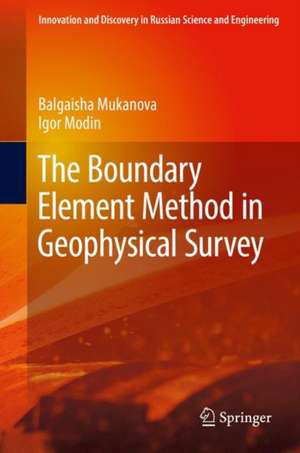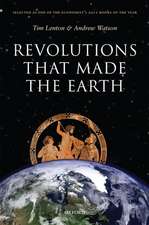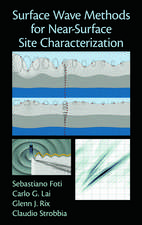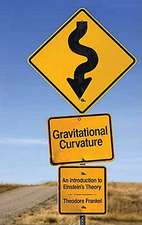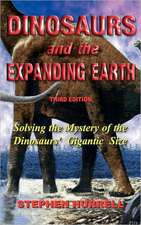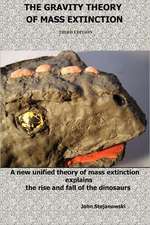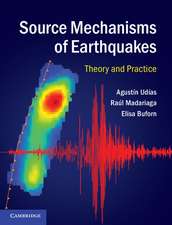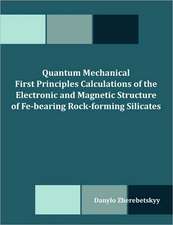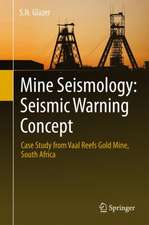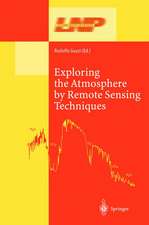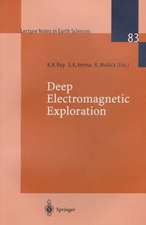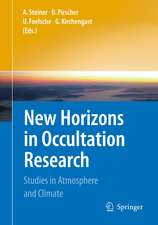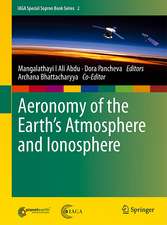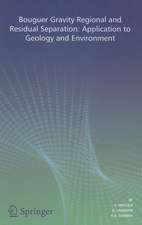The Boundary Element Method in Geophysical Survey: Innovation and Discovery in Russian Science and Engineering
Autor Balgaisha Mukanova, Igor Modinen Limba Engleză Hardback – 22 feb 2018
| Toate formatele și edițiile | Preț | Express |
|---|---|---|
| Paperback (1) | 482.60 lei 38-44 zile | |
| Springer International Publishing – 9 mai 2019 | 482.60 lei 38-44 zile | |
| Hardback (1) | 492.46 lei 38-44 zile | |
| Springer International Publishing – 22 feb 2018 | 492.46 lei 38-44 zile |
Preț: 492.46 lei
Preț vechi: 615.57 lei
-20% Nou
Puncte Express: 739
Preț estimativ în valută:
94.24€ • 98.03$ • 77.80£
94.24€ • 98.03$ • 77.80£
Carte tipărită la comandă
Livrare economică 11-17 aprilie
Preluare comenzi: 021 569.72.76
Specificații
ISBN-13: 9783319729077
ISBN-10: 3319729071
Pagini: 150
Ilustrații: XII, 154 p. 36 illus.
Dimensiuni: 155 x 235 mm
Greutate: 0.43 kg
Ediția:1st ed. 2018
Editura: Springer International Publishing
Colecția Springer
Seria Innovation and Discovery in Russian Science and Engineering
Locul publicării:Cham, Switzerland
ISBN-10: 3319729071
Pagini: 150
Ilustrații: XII, 154 p. 36 illus.
Dimensiuni: 155 x 235 mm
Greutate: 0.43 kg
Ediția:1st ed. 2018
Editura: Springer International Publishing
Colecția Springer
Seria Innovation and Discovery in Russian Science and Engineering
Locul publicării:Cham, Switzerland
Cuprins
Chap1: Introduction.- Chap2: Mathematical background.- Chap3: Electrical Survey Technique and Mathematical Models.- Chap4: The Boundary Element Method (BEM) in ERT Direct and Inverse Problems.- Chap5: BEM in the Sounding of Media with Ground Surface Relief. Chap6: Conclusions and Future Directions of Research.
Notă biografică
Dr. Balgaisha Mukanova is a Doctor of Mathematics and Physical Sciences, Professor at L.N. Gumilyov Eurasian National University, the Faculty of Mathematics and Mechanics, Astana, Kazakhstan.
Dr. Igor Modin is a Doctor of Technical Sciences, Professor at Lomonosov's Moscow State University, the Geological Faculty, Moscow, Russia.
Dr. Igor Modin is a Doctor of Technical Sciences, Professor at Lomonosov's Moscow State University, the Geological Faculty, Moscow, Russia.
Textul de pe ultima copertă
This volume is devoted to the application of the integral equations method (IEM) and boundary elements method (BEM) to problems involving the sounding of geological media using direct current (DC). Adaptive mesh generation algorithms and numerical methods for solving a system of integral equations are discussed. Integral equations for the media, which contains piecewise linear contact boundaries, immersed local inclusions, and subsurface relief, are derived and solved numerically. Both 2.5D and 3D models with ground surface relief are considered. For 2D conductivity distributions, the influence of the relief on the interpretation of results is shown. Search solutions of the direct problem with ground surface relief are compared using the appropriate interpretation of results based on different inversion programs.
- Describes in detail the application of the BEM and IEM to 2.5D direct problems using ERT for geological media with a complex structure and having a large number of internal contact boundaries;
- Provides algorithms of grid generation of the boundaries that are adapted to the geometry of the media, the surface relief and the measurements of electrode arrays;
- Discusses the application of the BEM to 3D sounding problems using the ERT method;
- Illustrates the applications of inversion programs to synthetic data generated using the BEM in comparison with the original model and discusses the quality of the associated interpretation.
Caracteristici
Describes in detail the application of the BEM and IEM to 2.5D direct problems using ERT for geological media with a complex structure and having a large number of internal contact boundaries Provides algorithms of grid generation of the boundaries that are adapted to the geometry of the media, the surface relief and the measurements of electrode arrays Discusses the application of the BEM to 3D sounding problems using the ERT method Illustrates the applications of inversion programs to synthetic data generated using the BEM in comparison with the original model and discusses the quality of the associated interpretation
